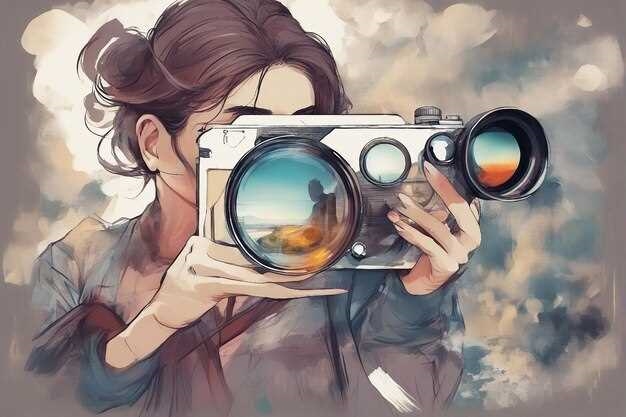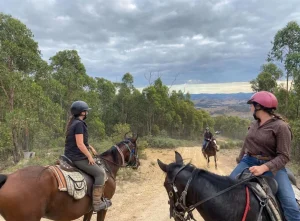

Embark on a captivating journey through the lens of masterful visual storytellers, as we delve into the world of renowned photographers who have left an indelible mark on the art of image-making. Discover the boundless realms of creativity and the myriad of techniques employed by these artistic visionaries, as they push the boundaries of conventional photography and redefine the very essence of visual expression.
Unveiling their unique perspectives and unrivaled ability to capture the essence of a moment, these extraordinary individuals have become synonymous with innovation and inspiration. Their photographs transcend the realm of mere documentation, transcending time and space to evoke emotions, provoke thoughts, and ignite the imagination of viewers.
Through their lens, the ordinary becomes extraordinary, the mundane transforms into the extraordinary, and the fleeting moments are immortalized in a single frame. Each photograph is a testament to their unwavering dedication, technical prowess, and unwavering passion for their craft. From the ethereal landscapes that transport us to distant realms, to the intimate portraits that reveal the depths of the human soul, these photographers have mastered the art of storytelling through their images.
Capturing Emotion: How to Evoke Feelings in Your Photos
Unleashing the power of emotions through photography is an art form that can truly captivate viewers. By skillfully capturing and conveying emotions in your photos, you have the ability to create a profound impact on your audience. In this section, we will explore various techniques and approaches that can help you evoke feelings in your photographs, allowing you to tell compelling stories and connect with your viewers on a deeper level.
One of the key elements in capturing emotion is understanding the power of composition. The way you frame your subject, the use of leading lines, and the placement of elements within the frame can all contribute to the emotional impact of your photo. Experimenting with different angles, perspectives, and focal lengths can help you create a sense of intimacy, tension, or tranquility, depending on the emotion you wish to evoke.
Lighting also plays a crucial role in evoking emotions in your photos. The quality, direction, and intensity of light can dramatically alter the mood and atmosphere of an image. Soft, diffused light can evoke a sense of warmth and tenderness, while harsh, dramatic lighting can create a feeling of tension or mystery. By understanding how to manipulate light, you can effectively enhance the emotional impact of your photographs.
Another technique to consider is the use of color. Different colors have the power to evoke specific emotions and can greatly influence the overall mood of your photos. Warm tones like red and orange can convey passion and energy, while cool tones like blue and green can evoke a sense of calmness or melancholy. By carefully selecting and incorporating colors into your compositions, you can amplify the emotional resonance of your images.
Lastly, capturing genuine moments and expressions can evoke powerful emotions in your photos. Candid photography allows you to capture raw and authentic emotions, as opposed to posed or staged shots. By observing and anticipating moments of vulnerability, joy, or contemplation, you can freeze these fleeting emotions in time, creating images that resonate with your viewers on a deeply emotional level.
In conclusion, capturing emotion in your photos requires a combination of technical skill, artistic vision, and a deep understanding of human emotions. By utilizing composition, lighting, color, and capturing genuine moments, you can evoke a wide range of feelings in your photographs, leaving a lasting impression on your audience.
Mastering Composition: Techniques for Creating Powerful Visuals
In this section, we will explore the art of composition and discover various techniques that can be employed to create visually impactful photographs. By understanding the principles of composition and utilizing different elements within a frame, photographers can elevate their images to a whole new level.
1. Rule of Thirds

One of the fundamental principles of composition is the rule of thirds. Instead of placing the subject in the center of the frame, imagine dividing the image into a grid of nine equal parts, with two horizontal and two vertical lines. By positioning the subject along these lines or at their intersections, photographers can create a more balanced and visually pleasing composition.
2. Leading Lines
Leading lines are a powerful compositional tool that can guide the viewer’s eye through the image. These lines can be found in various forms, such as roads, fences, or even natural elements like rivers or tree branches. By strategically incorporating leading lines into the frame, photographers can create a sense of depth and draw attention to the main subject.
By mastering these composition techniques, photographers can effectively communicate their vision and create visually captivating images that leave a lasting impact on the viewer. Experimenting with different compositions and exploring the unique perspectives of famous photographers can further enhance one’s understanding of composition and inspire new creative possibilities.
Exploring Light and Shadow: Utilizing Contrast to Enhance Your Images
Delving into the interplay of light and shadow can be a powerful technique for photographers seeking to elevate their images. By harnessing the inherent contrast between these two elements, you can create visually striking compositions that captivate viewers and evoke a range of emotions. In this section, we will explore the art of utilizing contrast to enhance your photographs, offering insights and techniques inspired by renowned photographers.
Emphasizing Drama with High Contrast
One way to make a bold statement with your images is by embracing high contrast. By intentionally exaggerating the difference between light and shadow, you can infuse your photographs with a sense of drama and intensity. This technique is particularly effective when capturing subjects with strong lines, textures, or shapes. Experiment with positioning your subject in a way that maximizes the contrast, and consider using lighting techniques such as side lighting or backlighting to enhance the effect.
Creating Depth and Dimension with Low Contrast
On the other end of the spectrum, low contrast can be employed to create a sense of depth and dimension in your photographs. By reducing the difference between light and shadow, you can produce images that appear softer and more ethereal. This technique is often used in portrait photography to achieve a dreamy or romantic atmosphere. Experiment with diffused lighting or shooting during the golden hour to minimize contrast and create a gentle, intimate ambiance.
By exploring the interplay of light and shadow and utilizing contrast in your images, you can elevate your photography to new heights. Whether you choose to embrace high contrast for dramatic impact or employ low contrast for a softer, more nuanced effect, understanding how to effectively use contrast will allow you to create images that leave a lasting impression on viewers.
Experimenting with Perspective: Unique Ways to Frame Your Subjects
Exploring new perspectives in photography can lead to captivating and visually striking images. By experimenting with different angles, viewpoints, and framing techniques, photographers can create unique compositions that engage viewers and evoke a sense of intrigue. In this section, we will delve into various methods to push the boundaries of perspective and discover innovative ways to frame your subjects.
1. Embracing Unconventional Angles
One way to add a fresh perspective to your photographs is by embracing unconventional angles. Instead of shooting from eye level, try crouching down low or climbing up high to capture your subject from a unique vantage point. By doing so, you can alter the viewer’s perception and create a more dynamic and engaging composition.
2. Playing with Framing Techniques
Framing is an essential aspect of photography that can greatly impact the overall composition. Experiment with different framing techniques to add depth and visual interest to your images. Incorporate natural elements such as archways, doorways, or tree branches to frame your subject within the scene. Alternatively, you can experiment with using objects or people in the foreground to create a frame within a frame effect, drawing attention to the main subject.
By exploring these unique ways to frame your subjects, you can elevate your photography skills and create images that stand out from the crowd. Remember, the key is to think outside the box, challenge traditional perspectives, and let your creativity guide you in capturing truly remarkable photographs.
The Art of Storytelling: Creating Narrative in Photography
In the realm of visual storytelling, photography holds a unique power to captivate and engage viewers. Through the lens, photographers have the ability to convey narratives, evoke emotions, and transport audiences to different worlds. This section explores the art of storytelling in photography, delving into the techniques and strategies employed by talented photographers to create compelling narratives.
Unveiling a tale through composition:
Composition plays a crucial role in storytelling through photography. By carefully arranging elements within the frame, photographers can guide the viewer’s eye and convey a specific narrative. The placement of subjects, use of leading lines, and balance of positive and negative space all contribute to the overall story being told. Through composition, photographers can create a sense of harmony, tension, or mystery, drawing the viewer deeper into the narrative.
Embracing the power of light and shadow:
Light and shadow are powerful tools in storytelling photography. The interplay between light and darkness can evoke a range of emotions and add depth to the narrative. Photographers skillfully manipulate light to highlight certain elements, create dramatic contrasts, or establish a particular mood. Whether it’s the soft glow of golden hour or the stark shadows of a dimly lit room, the use of light and shadow can enhance the storytelling aspect of a photograph.
Conveying emotions through visual storytelling:
Emotions are at the heart of any compelling narrative, and photography is no exception. Talented photographers have the ability to capture and convey a wide range of emotions through their images. Whether it’s joy, sadness, fear, or awe, the emotions portrayed in a photograph can resonate deeply with viewers, allowing them to connect with the story being told. Through the use of facial expressions, body language, and carefully chosen moments, photographers can create powerful emotional narratives.
The power of symbolism and metaphor:
Symbolism and metaphor are powerful tools in storytelling photography. By incorporating symbolic elements or using metaphors, photographers can add layers of meaning to their images. These visual cues can invite viewers to interpret the narrative in their own unique way, sparking imagination and fostering a deeper connection with the photograph. Whether it’s a single prop, a specific location, or a carefully chosen color palette, symbolism and metaphor can enrich the storytelling aspect of photography.
Creating a narrative series:
While individual photographs can tell stories on their own, a series of images can create a more comprehensive and immersive narrative. Photographers often use a series of photographs to explore a theme, document a journey, or depict a sequence of events. By carefully curating and sequencing the images, photographers can guide the viewer through a visual story, allowing for a more profound and impactful storytelling experience.
In conclusion, the art of storytelling in photography goes beyond capturing a single moment. It involves the deliberate use of composition, light and shadow, emotions, symbolism, and narrative series to create a captivating and immersive visual narrative. Through these techniques, photographers can transport viewers to different worlds, evoke emotions, and leave a lasting impression.
Pushing Boundaries: Breaking the Rules to Achieve Innovative Results
Exploring new horizons and challenging traditional norms are essential elements in the pursuit of groundbreaking photography. By daring to break the rules, photographers can unlock their creative potential and achieve innovative results that captivate and inspire viewers.
In this section, we delve into the concept of pushing boundaries in photography, where photographers go beyond the conventional techniques and approaches to create truly unique and extraordinary images. By defying the norms and experimenting with unconventional methods, these photographers have been able to push the limits of their craft and produce captivating visuals that leave a lasting impact.
Breaking the rules in photography involves stepping outside the comfort zone and embracing unconventional perspectives, compositions, and techniques. It requires a willingness to challenge established norms and experiment with different approaches to capture the essence of a subject in a fresh and unexpected way.
One aspect of breaking the rules is defying the traditional notions of composition. Instead of adhering to the rule of thirds or other established guidelines, photographers may choose to intentionally place their subjects off-center or experiment with unconventional framing techniques. This deviation from the norm can create a sense of visual tension and intrigue, drawing the viewer’s attention to the subject in a unique and compelling manner.
Another way photographers push boundaries is by experimenting with unconventional lighting techniques. By deviating from the standard use of natural or artificial light, photographers can create dramatic and atmospheric effects that add depth and emotion to their images. Whether it’s using unconventional light sources, manipulating shadows, or playing with reflections, these photographers challenge the traditional notions of lighting to achieve innovative and visually striking results.
Furthermore, breaking the rules in photography often involves exploring unconventional subject matter or capturing familiar subjects in unexpected ways. By venturing into uncharted territories and embracing the unconventional, photographers can challenge societal norms and provoke thought and emotion through their imagery. This approach allows them to create images that are not only visually captivating but also carry a powerful message or narrative.
In conclusion, pushing boundaries and breaking the rules in photography is a powerful way to achieve innovative and extraordinary results. By daring to challenge established norms and experimenting with unconventional techniques, photographers can unlock their creative potential and create images that captivate and inspire viewers. So, embrace the unconventional, defy the norms, and let your creativity soar to new heights.





